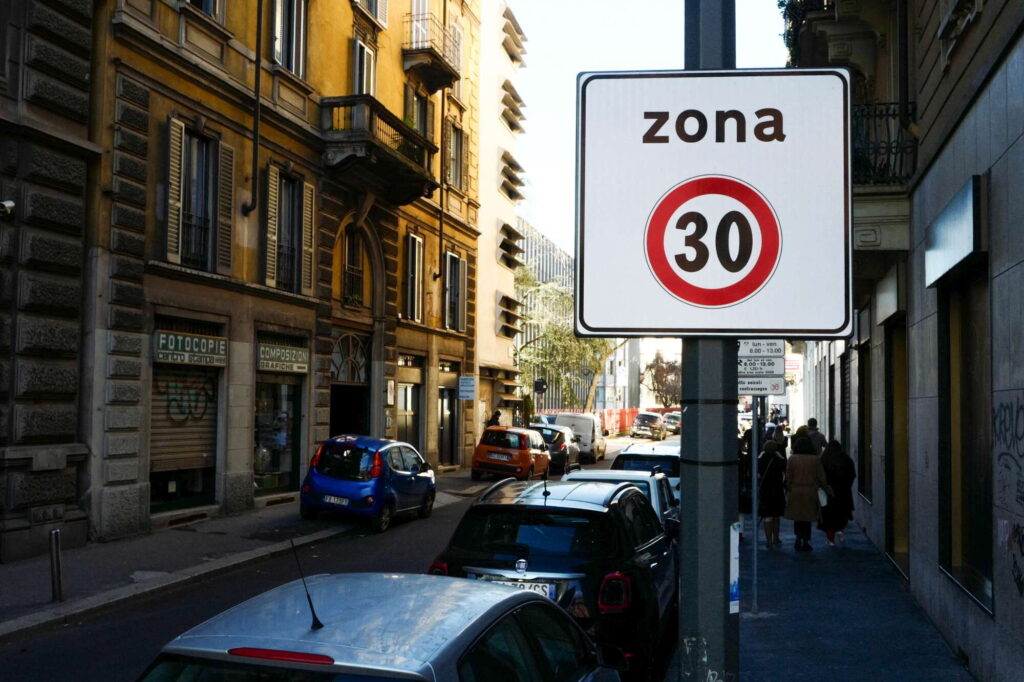Rome becomes a 30km/h city
"We have a road safety emergency" Deputy Mayor for Mobility Patané said "Crashes have increased, and we need to drastically reduce the number of fatalities. Nearly half of those hit and killed on Rome's streets are over 65. Rome will become a 30 km/h city, at least in some strategic areas."
As part of the project measure ROM_8, Designing the urban space to promote active travel modes, PT, and “30 km/h” zones, the Eternal City is about to introduce a 30 km/h speed limit in the city centre to reduce the number of traffic accidents further.
The resolution is expected to be approved by the City Council as early as September. The measure is part of the road safety plan launched by the Capitoline Hill (Campidoglio) to drastically reduce accidents through speed cameras, as well as new Vista Red lights at intersections. Meanwhile, the efforts on the "black points" on the Cristoforo Colombo highway have been completed, and the first 52 30 km/h roads have already been identified in the other 14 municipalities.
Road accidents in Rome: costs and causes
"The social cost of accidents in Rome is around one billion euros a year, or 350 euros per capita," Patanè specified. He then added that the majority of accidents are due to improper behavior, distracted driving, and speed: "The figure is 94.4%," he further specified. "The incidence of accidents due to distracted driving is 12.5%, while those due to speeding amount to 7.5%. Reducing speed aims to reduce the risk of fatal collisions
Fatal accidents in Rome: victims on the capital's roads
"Compared to 2004, when there were 22.2 thousand accidents with over 30 thousand injuries and 260 deaths, in Rome in 2021, accidents were reduced to 11 thousand with fewer than 14 thousand injuries and 120 deaths, a decrease in deaths of more than 50%," Patanè explained. In particular, in most cases, the deaths involve older people. "33% of these deaths," the councilor continued, "are elderly people over the age of 75. If we add people aged 65 to 74, the figure reaches 44.5%; essentially, 44.5% of deaths involve people over 65." This figure also holds for deaths from collisions: "50% of pedestrians killed in accidents are over 75 in the nighttime hours between 10:00 PM and 6:00 AM."
Rome is following the successful example set by Bologna, which, after only one year of implementation, has achieved a historic milestone: for the first time since 1991 (the oldest ISTAT data available at the city level), no pedestrians have been killed on Bologna's roads. There have been zero pedestrian deaths, and the number of pedestrians struck has decreased by 16%. All figures here.
Why do speed and deceleration matter?
Higher speeds are linked to an increased risk of crashes and a greater likelihood of injury or death, regardless of the cause of the accident. Even a slight change in speed can significantly impact a driver's ability to react and stop promptly, especially in situations involving cyclists or pedestrians. In the event of a crash, speed is the most critical factor influencing your chances of survival and the severity of injuries.
If a pedestrian is hit by a car travelling at 50km/h, there is only a 20% chance they will survive. At 30km/h, the survival rate increases significantly to 90%.
During a collision, a vehicle experiences a sudden reduction in speed, but the occupants continue to move forward at their original velocity until they are brought to a stop. The quicker the body must absorb the energy generated by the crash, the more severe the potential injuries.

@photocredit Auckland Transport (AT).

@photocredit Auckland Transport (AT).
Learn more about Rome's commitment in Upper
Watch the full video 'Perché il Centro Storico diventerà zona a 30 km/h' here


